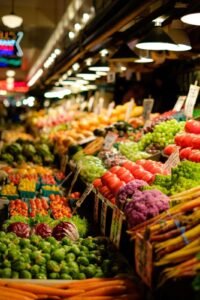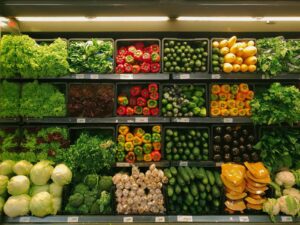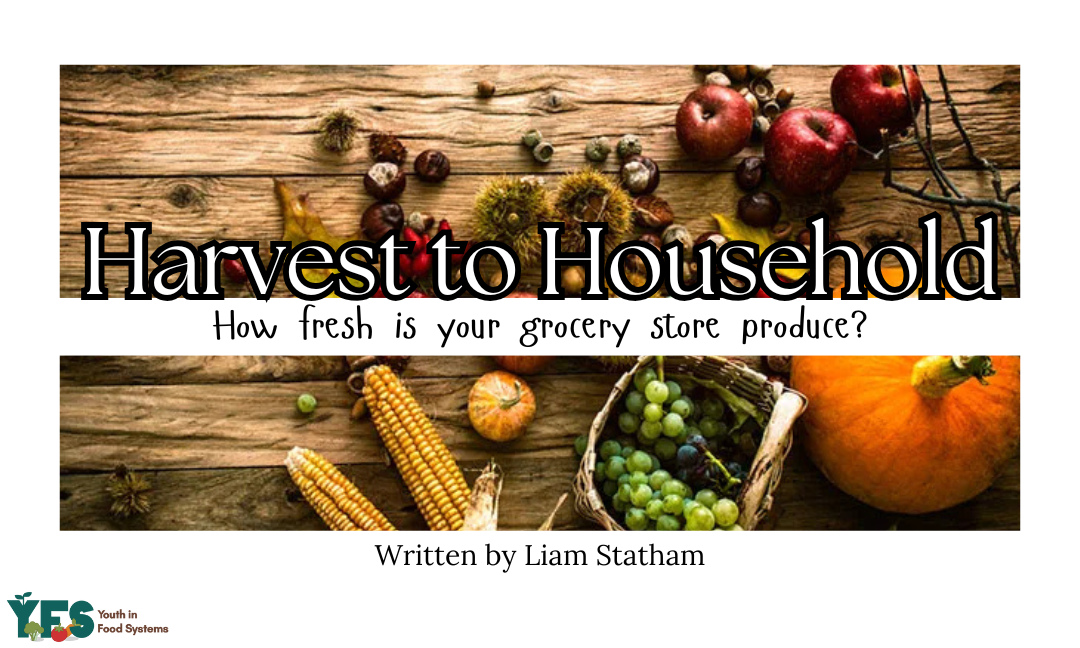Written by: Liam Statham
Edited by: Alessa Zaitseva
Designed by: Eleanor Jeavons
Published by: Ashe Reid
When you walk into a grocery store, you are surrounded by dozens of displays full of vibrant fruits and vegetables. However, this produce might not be as fresh as you would think, as for some fruits and vegetables the journey from farm to store is much longer than most consumers realize.
The Journey

1. Production. In many cases, produce is actually picked before it is ripe so that it can mature during the long transportation process.
2. Cleaning and packaging. Fruits and vegetables are shipped to factories (either by truck or by plane) where they are washed and processed. This can include cutting, drying, smoking, or fermenting, all depending on what the desired product is. Produce is then packaged into jars or plastic wrap.
3. Shipping to grocery stores. This packaged produce is not shipped directly to grocery stores; instead, it is first shipped to a warehouse by truck. At these warehouses, the produce undergoes additional processing before it can reach store shelves. This includes sorting, repackaging, and inspections of quality. Once this processing is done, the produce is shipped to the grocery store, again by truck.
4. Display. Once the produce arrives, it is unloaded and stored in a backroom until it is ready to be put on display. If grocery stores have a surplus of a specific item, they must rotate the stock to ensure the oldest items are sold first, which can lead to newer stock sitting around for quite a few days, or even weeks.

Results
Given that produce is shipped at least three times before arriving at grocery stores and that these locations often have vast distances between them, The National Center for Appropriate Technology estimates that fresh produce travels over 1500 miles (2414 km) before arriving. This large distance takes days to travel across, days in which the produce can lose much of its taste and nutritional value. Furthermore, if you are buying produce that is out of season, it is often shipped to grocery stores not days, but months after it is harvested. For example, because apples only ripen in such a short period, they are forced to be kept in storage in order to have stock that lasts the whole year. This means that the average supermarket apple is shockingly over a year old.
Resources
https://www.delish.com/food-news/a47986/truth-about-supermarket-produce/
https://www.hopkinsmedicine.org/health/wellness-and-prevention/health-benefits-of-farmers-markets?

